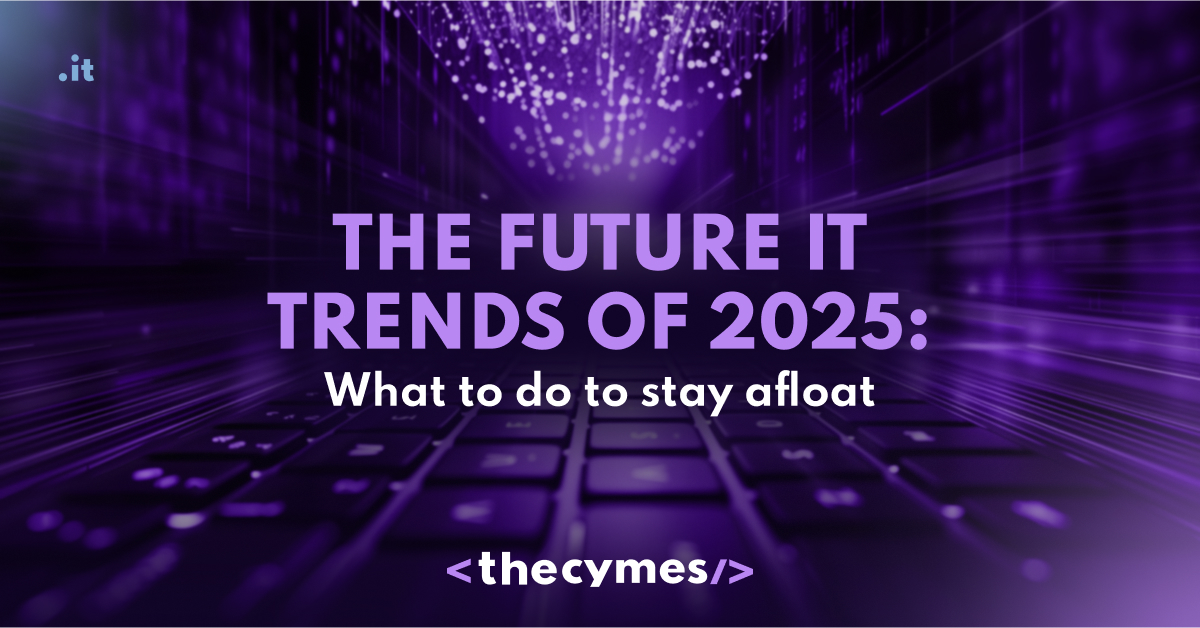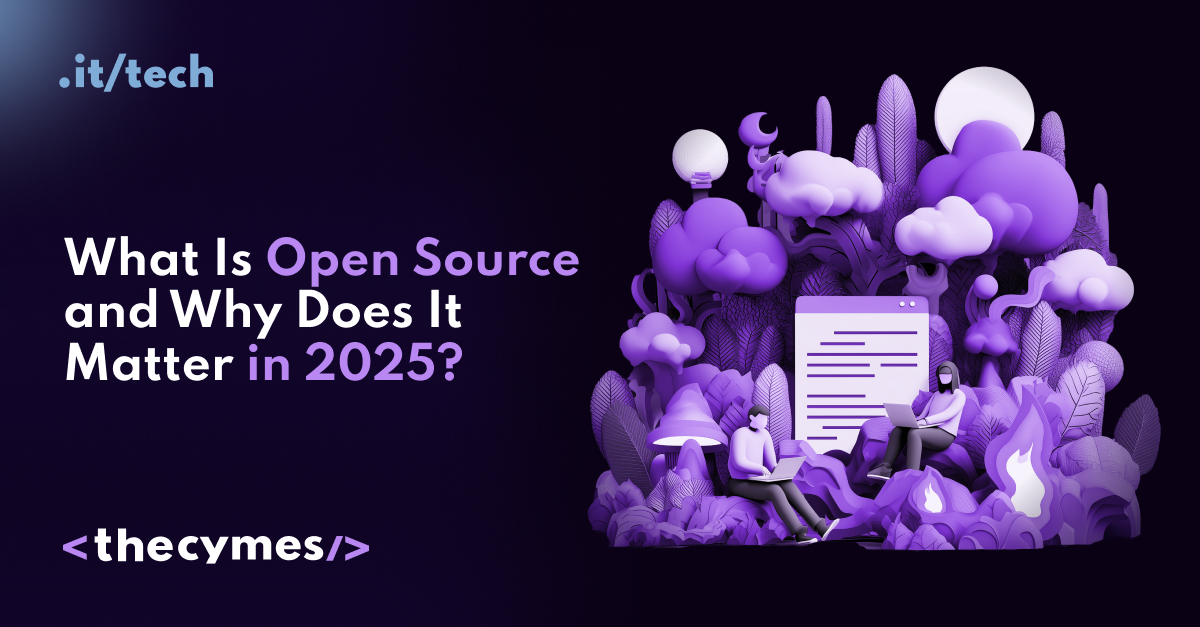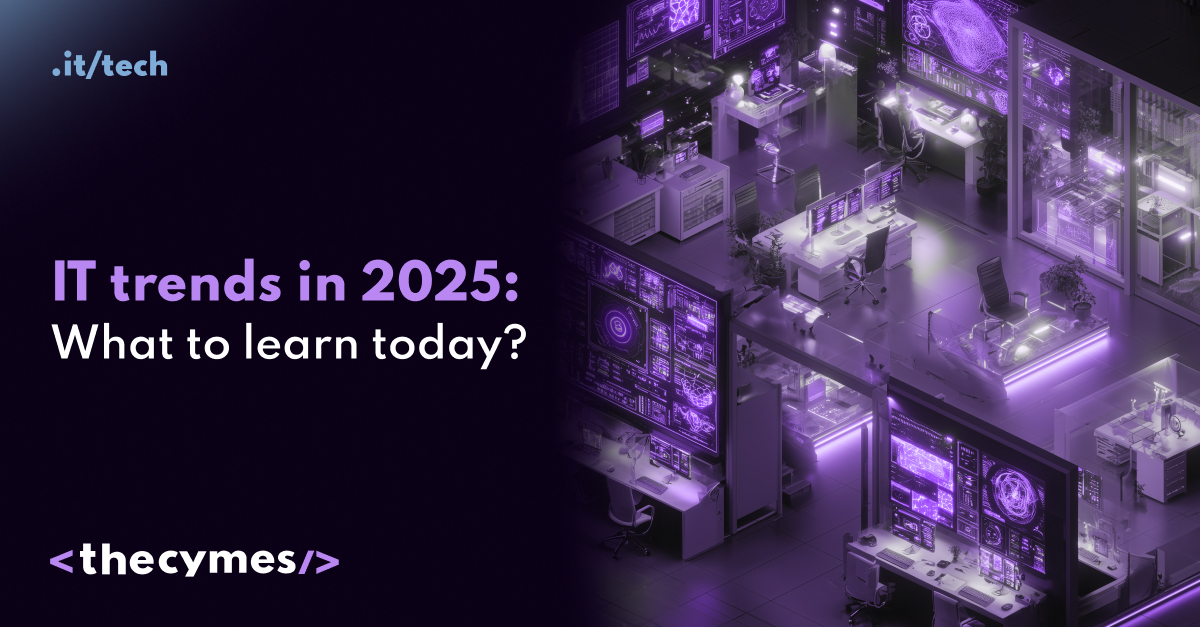Table of Content
The future IT trends of 2025: What to do to stay afloat
/>What technologies will determine the IT sphere in 2025? Explore future trends and learn how to prepare for change to remain a sought-after specialist.Future trends in IT: What to expect in 2025
We all know, that the IT field is changing very quickly. Fast technology improvements are transforming industries, making new chances, and bringing special challenges. Keeping up with such trends is thus important for success for both workers and companies. Based on recent predictions and industry knowledge, this article considers the main trends that will shape the IT sector in 2025.
1. Artificial Intelligence and Machine Learning
AI is on top!
Of course, we can’t but refer to artificial intelligence dominating the talks within the tech world. From routine daunting tasks to making complex decisions, it has a great impact on different industries. With AI technologies advancing, there has been a fast rise in demand for professionals skilled in AI and machine learning.
What to learn?
The aspiring tech professional should be geared toward:
- Machine Learning basics: In order to work in AI, you need to understand linear regression, neural networks, and the algorithms behind them. You can lay a strong foundation by taking courses and online tutorials.
- Big data: Learn how to handle large datasets, which are important for training AI models. Knowledge of data preprocessing methods and visualization tools like Tableau or Power BI will give you an upper hand.
- Cloud platforms for AI: Google AI and AWS Sagemaker are two important platforms for using AI applications. Learning how to use these platforms will make your work easier and improve your projects.
Real-time AI models
Developing AI models that can be used in real time is an increasingly important area. This trend will help businesses make decisions in a timely manner using real-time data, improving efficiency and shortening response times.
Case studies
Look to the healthcare sector, where AI is applied to the examination of medical images for the discovery of diseases. Companies like Zebra Medical Vision are using AI programs that can find problems like pneumonia and breast cancer more precisely than some human radiologists. This saves time and greatly improves the level of patient care.
Challenges and considerations
Although AI has huge benefits, it also comes with challenges:
- Ethical issues: The use of AI gives rise to ethical issues concerning privacy, bias, and decision-making. Companies need to address these issues with care.
- Job displacement: Automation can displace jobs in some sectors, bringing about social challenges that need to be addressed.
- Data dependency: AI models require large amounts of good quality data that are often difficult to obtain and manage properly.

Image by Pexels
2. Cybersecurity
The growing need for cybersecurity
With more devices linking to the internet and breaches in data occurring frequently, cybersecurity has become very important today. In 2025, organizations will focus on security in protecting sensitive information to gain customer trust.
Challenges and considerations
Cybersecurity has its challenges:
- Constantly evolving threats: Cyber threats keep changing, so ongoing training and adjustment of strategies are needed.
- Resource constraints: Many organizations lack the resources to implement comprehensive security measures, leaving them vulnerable.
- Compliance issues: Navigating the complex landscape of regulations can be daunting for companies, especially those operating in multiple jurisdictions.
3. Cloud computing development
The shift to cloud technologies
The movement to cloud-based solutions is something that will most likely continue growing. Companies are adopting platforms such as AWS, Azure, and Google Cloud in order to improve the management of their systems. This change does not only bring about cost savings but also brings about scalability and flexibility.
Important learning areas
To remain relevant in this field, consider learning about the following:
- Containerization and orchestration: Docker and Kubernetes are some of the critical technologies for app containerization, ensuring the app and its constituent parts can be packaged and work seamlessly, regardless of changes in locations or situations.
- CI/CD automation: Knowledge of Jenkins and GitHub Actions will go a long way toward continuous integration and deployment. Continuous integration and delivery practices help development teams deliver more frequently and reliably than ad-hoc methods.
- DevOps integration: Integration of development and operations (DevOps) practices will gain more ground, where teams can collaborate with each other to fast-track processes. Most organizations that adopt the DevOps methodologies report reduced time-to-market and an increase in the quality of the product.
Industry examples
A company like Netflix has been able to implement these practices of DevOps and thus deploy codes thousands of times in a day. This agility enables them to quickly respond to user feedback and remain ahead of their competitors.
Challenges and considerations
Cloud computing has benefits, but also challenges:
- Data security: Keeping private information in the cloud makes one worried about data breaching and regulation compliance.
- Vendor lock-in: Companies could become so reliant on a particular cloud provider that switching between providers or relocating their data becomes difficult or impossible.
- Downtime risks: Issues or outage from the side of the cloud service provider may interrupt business activities.
4. Rust: The language of the future
The rise of Rust
Rust is increasingly popular for its emphasis on performance and safety. Many groups are turning to Rust to put a stop to memory leaks and ensure safe multithreading. This systems programming language is designed to keep memory safe without sacrificing performance, which makes it a great choice for developers.
Learning Rust
To get ahead of this trend, consider focusing on:
- Rust basics: Learning the basics of a language via online courses or community resources. Involvement in the Rust community can be rewarding in terms of insight and assistance.
- High-Performance apps: Learning how to write applications where high performance is a must, as Rust really shines at building system-level, game development software, and more.
- WebAssembly (Wasm): How Rust can be used in WebAssembly for web development. This pairing enables developers to run high-performance applications in web browsers.
Industry adoption
As more and more companies adopt Rust, knowledge of this language will give a competitive advantage in the job market. Companies like Mozilla and Dropbox are already using Rust in production, showing its increasing importance.
Challenges and considerations
While Rust is full of good things, there are also some difficulties:
- Steep learning curve: The special ownership system and the strict rules from the compiler may make Rust hard to learn for developers.
- Limited resources: Rust has fewer libraries and frameworks compared to older languages, which can make development slower.
- Community size: The Rust community is growing but is still smaller compared to the communities for languages like Python or Java, which reduces opportunities to collaborate.

Image by Pexels
5. Quantum computing
The future of computing
Quantum computing is not some vague idea about the future; it's slowly becoming a reality. Companies like IBM and Google lead the way with cloud access to quantum computers. It can solve problems that classical computers cannot handle, in particular, in areas like cryptography, material science, and complex system simulations.
Learning quantum computing
The professional should focus on the following areas in order to get into this niche field:
- Quantum physics basics: The professionals should first learn quantum mechanics, which is the basis for quantum computing. Online courses and academic resources can provide a solid foundation.
- Quantum programming languages: Familiarity with languages such as Qiskit and Cirq, designed for writing quantum algorithms.
- Algorithm development: This skill will be indispensable once quantum computing becomes more mainstream.
Quantum Computing case studies
In 2023, researchers at Google presented a quantum algorithm that greatly decreased the time needed to solve some optimization problems. This achievement created new opportunities for industries like finance and logistics, showing the powerful potential of quantum computing.
Challenges and considerations
Quantum computing has several challenges:
- Technical complexity: The technology is still new, and making quantum algorithms needs special skills.
- High costs: Construction and maintenance of quantum computers are expensive, making them less accessible to many organizations.
- Uncertain regulation: Regulatory frameworks for quantum technology are still being worked out as it develops, creating uncertainty for businesses.
6. Augmented and Virtual Reality (AR/VR)
Augmented and virtual reality technologies are increasingly becoming part of several sectors, including entertainment, healthcare, and education. Their immersive capabilities are changing user experiences and opening up new avenues of engagement.
Skills for AR/VR development
You should focus on 3D design basics to get started with AR/VR. Understanding the basic rules of 3D design is needed to create interesting environments. Industry-standard programs for 3D modeling include Blender and Maya. The VR/AR programming requires you to learn languages like C# and C++ to make experiences engaging. Knowledge of how to use game engines like Unity and Unreal Engine will also be useful.
Industry applications
AR/VR is increasingly being used in training, gaming, and even virtual meetings. For example, VR in healthcare trains students on surgical procedures without the risks associated with performing real surgeries, increasing learning and better preparing students for real-world challenges.
Challenges and considerations
While there are many exciting opportunities within AR/VR, there are also some important challenges to consider:
- High development Costs: The resource intensiveness of AR/VR content creation can discourage investment by smaller organizations.
- User adoption: It can also prove difficult to get users to adopt and use AR/VR technologies as not everyone is comfortable with the idea of immersion.
- Technical limitations: The quality and accessibility of AR/VR experiences may also be constrained by hardware limitations, affecting user satisfaction.
7. The importance of continuing learning
Keeping up with the fast-paced industry
As technology changes, so must your skills. There is a need for continuous learning to remain competitive in IT. Things can change fast, so what matters today may not matter tomorrow.
Lifelong learning mindset
Cultivate a lifelong learning mindset. Be open to new challenges and new areas to explore. With this kind of thinking, you will be able to adjust to change and seize opportunities as they arise.
Developing a problem-solving mindset is something that you can't afford to overlook in IT. The ability to analyze challenges, think critically, and find innovative solutions will make you stand out in the competitive job market.
So, what can we wait for in this field?
The IT world in 2025 will be filled with opportunities. Workers can prepare for success by paying attention to important trends such as artificial intelligence, cybersecurity, cloud computing, programming languages like Rust, quantum computing, and AR/VR. These fields will require continuing learning and improvement of skills to move forward.
We want you to know that flexibility and openness to new technologies will be your greatest strengths. The road ahead may be tough, but the rewards that can be reaped are huge!




